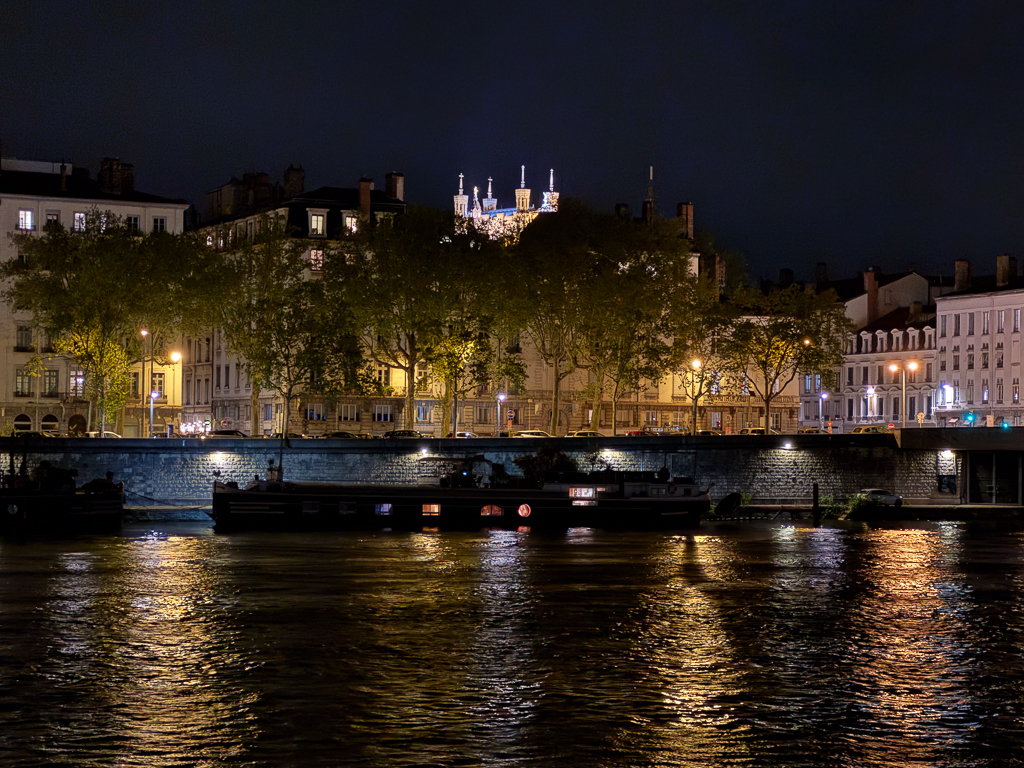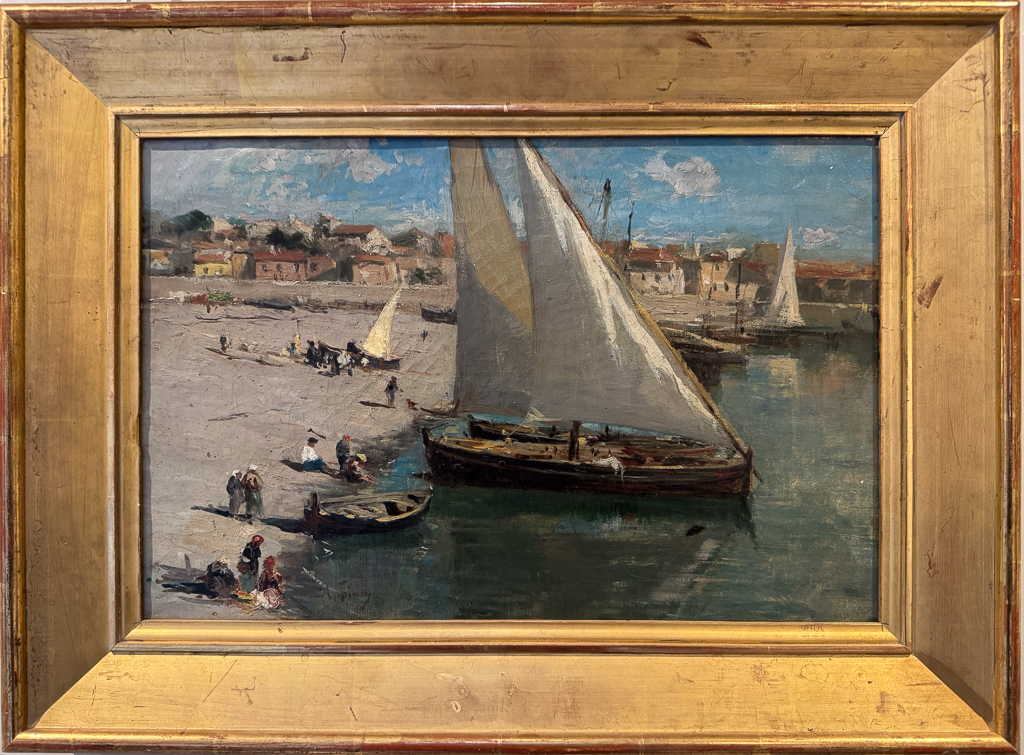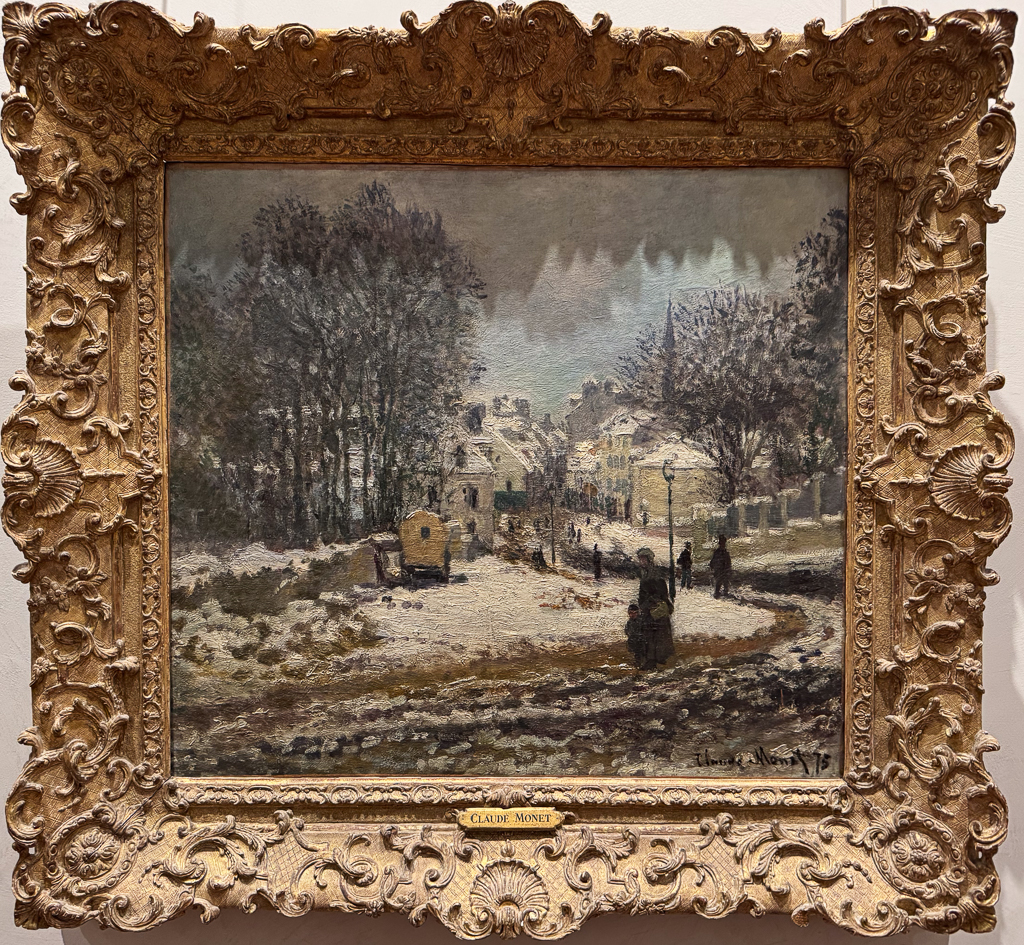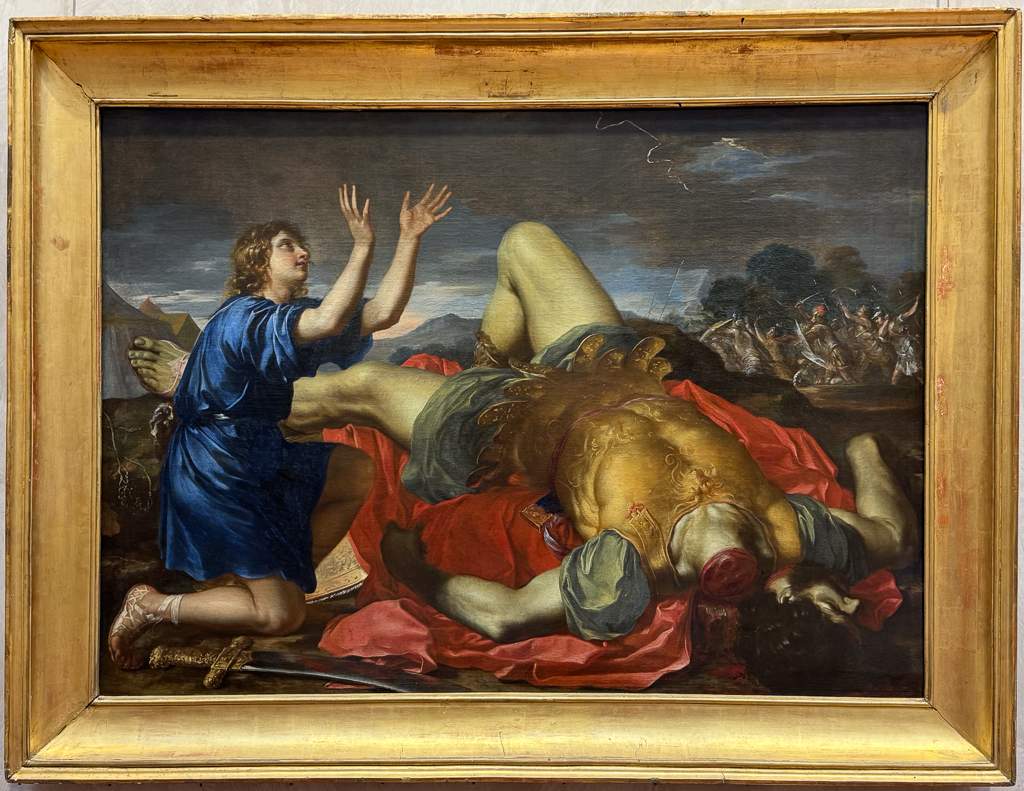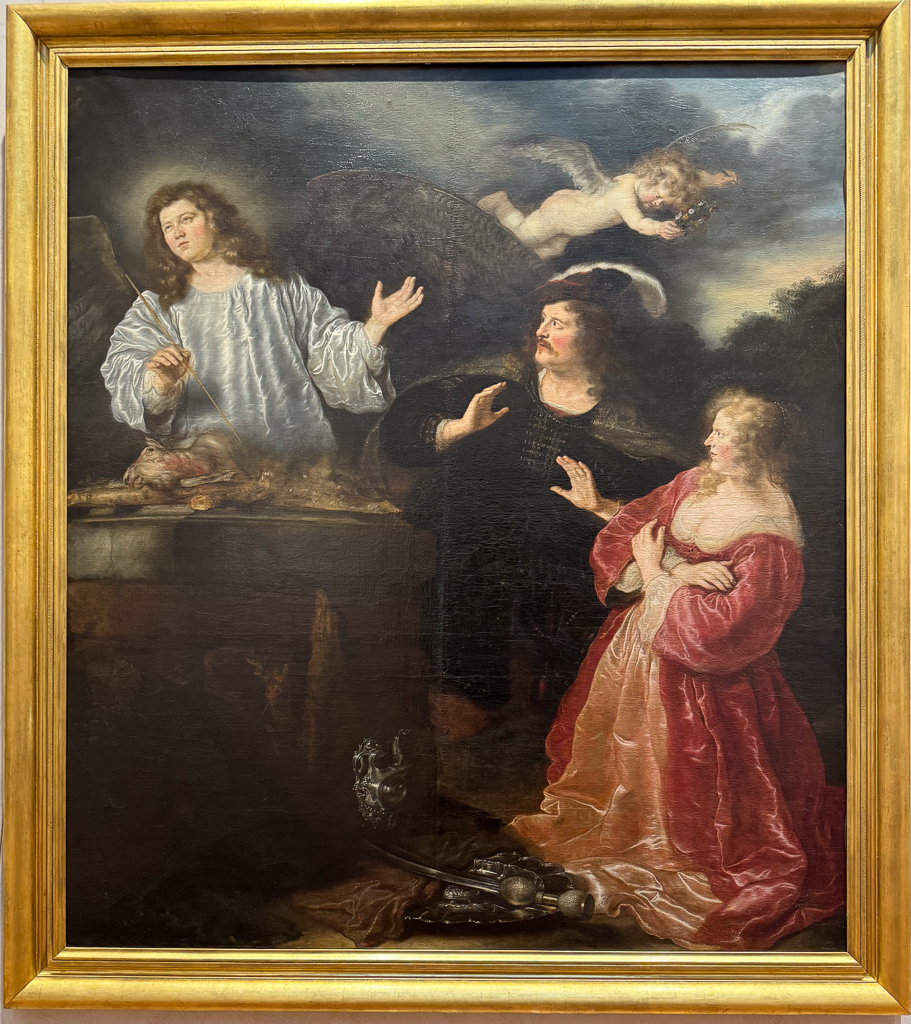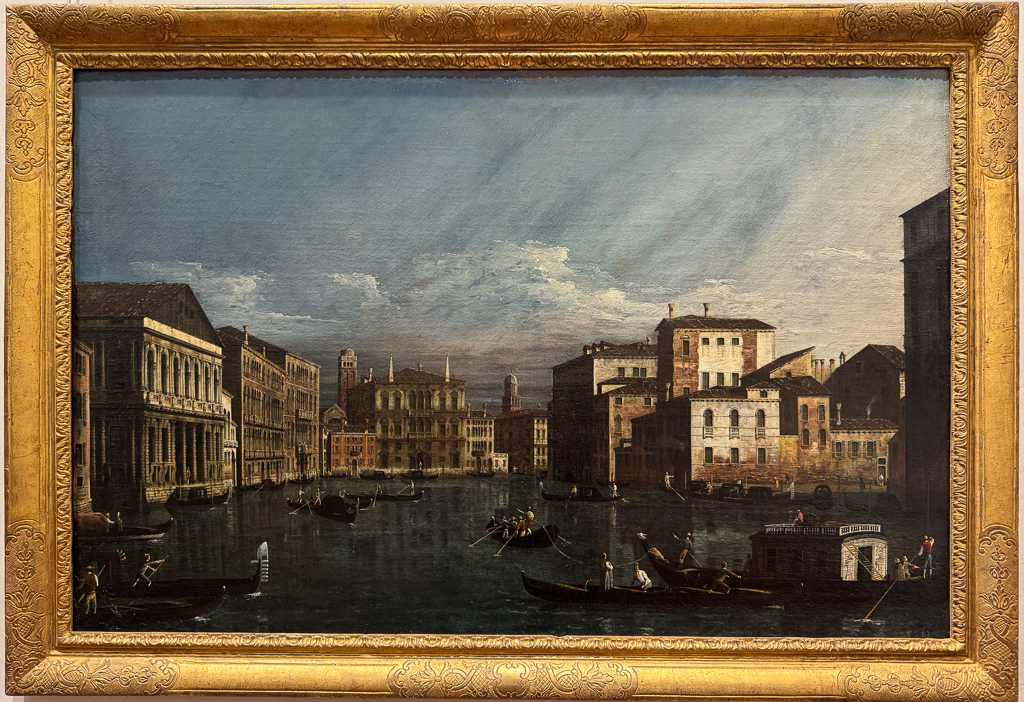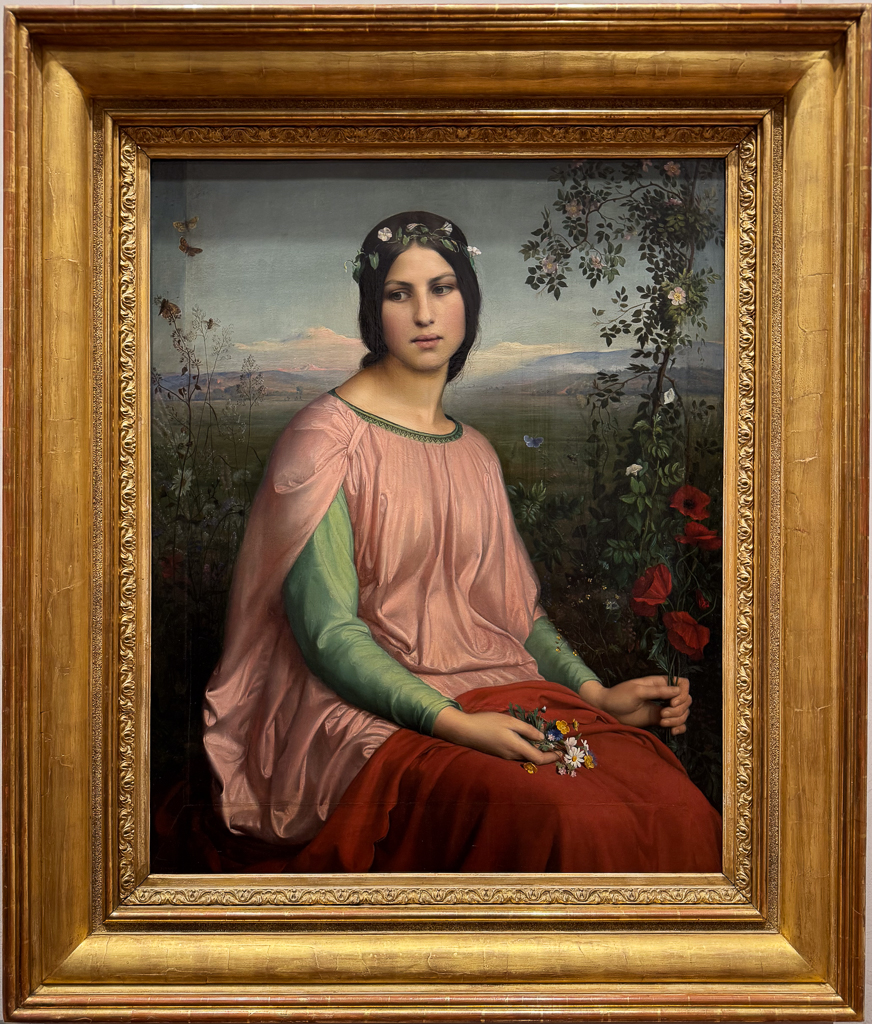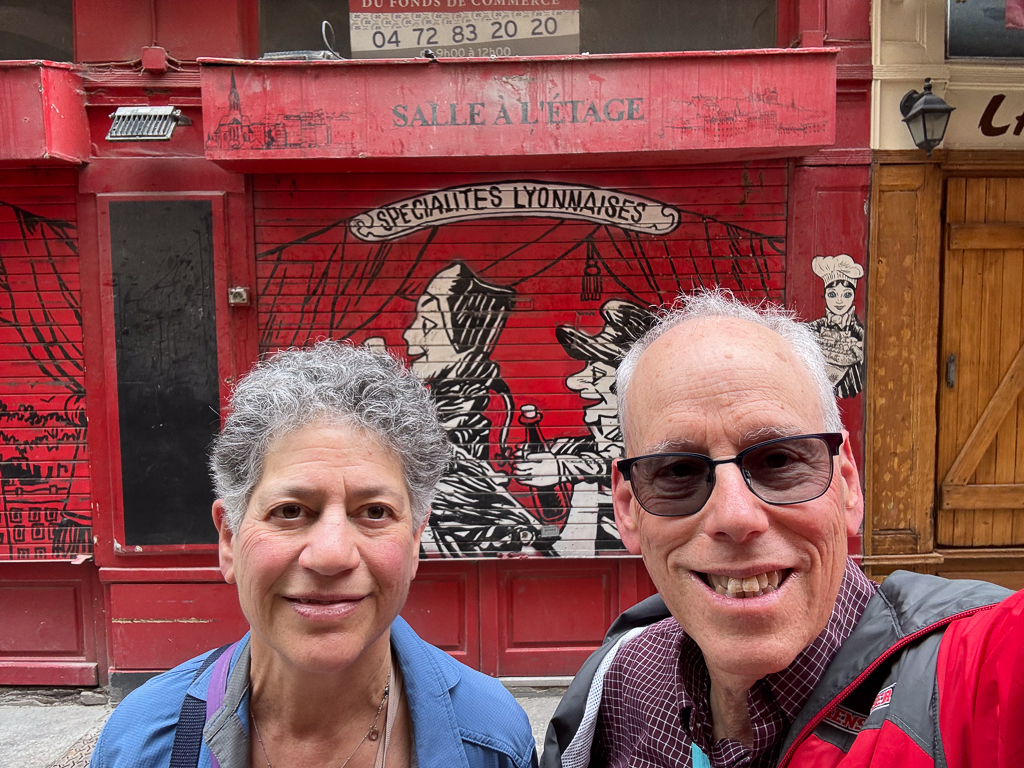This morning, we joined the ship’s “Silk Weavers’ Walk” to see a bit more of Vieux Lyon and learn a bit more about the silk industry here…and to walk off some of the food we’ve been enjoying.
We walked over to Place Bellecour where our guide explained its history – it had been the Archbishop of Lyon’s garden, but was abandoned for many years; eventually, Louis XIV turned it into a public square, complete with a bronze statue of the king, which, of course, was destroyed during the French Revolution. It remained a public square and eventually got a new statue of Louis XIV, which remains there to this day.
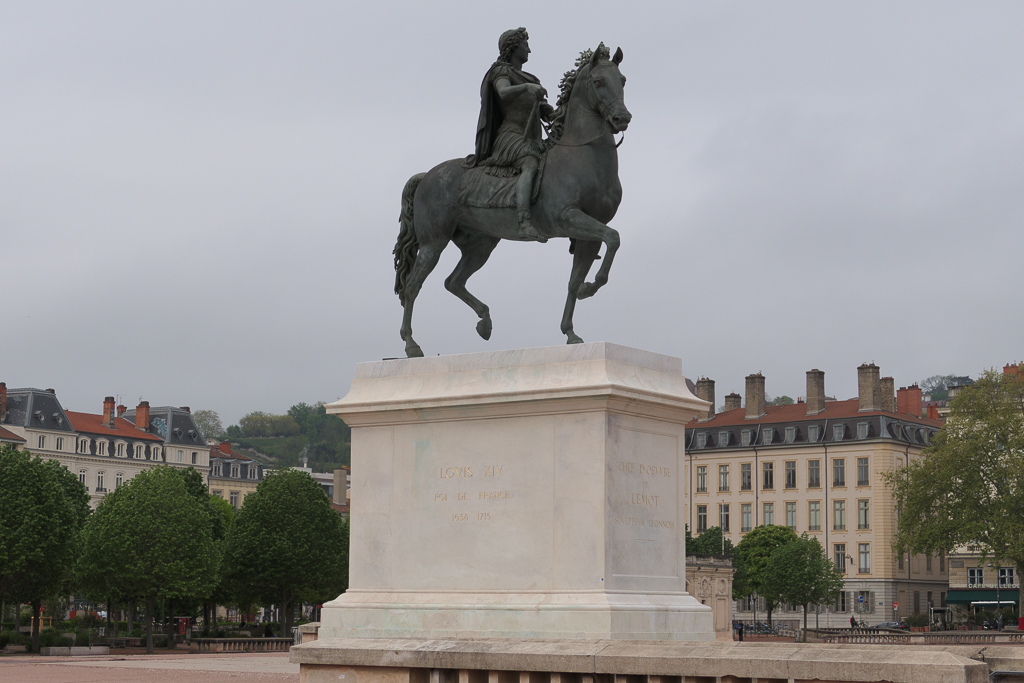
We walked the few blocks from Place Bellecour to Vieux Lyon; our guide explained that traboules were built as enclosed streets connecting densely-packed houses; there are a few open to the public, and we traversed one, the “Long Traboule”, which connects four houses.
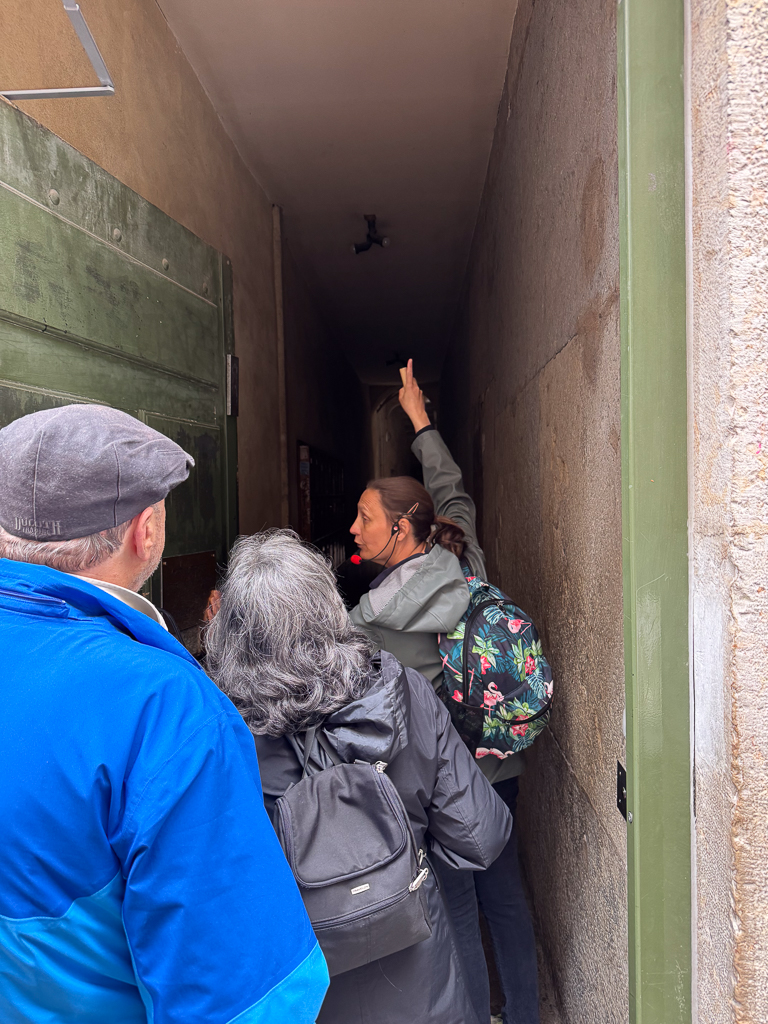
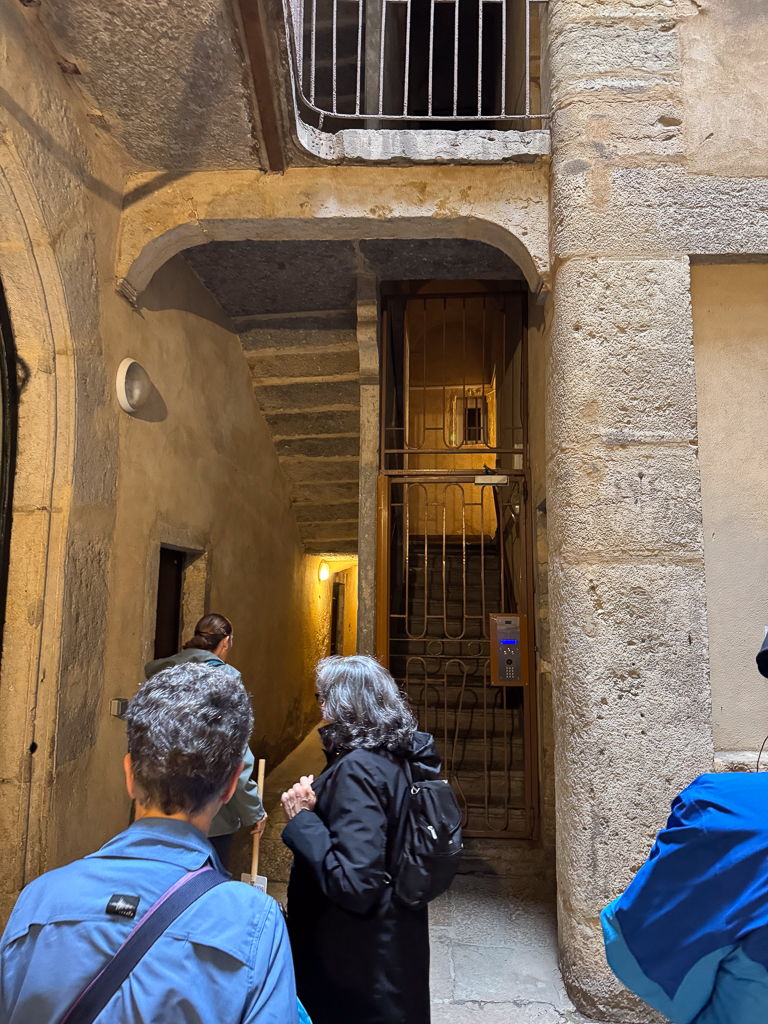
We then stopped outside a branch of Brochier Soieries to learn about the lifecycle of the silkworm and its relationship to the mulberry bush.
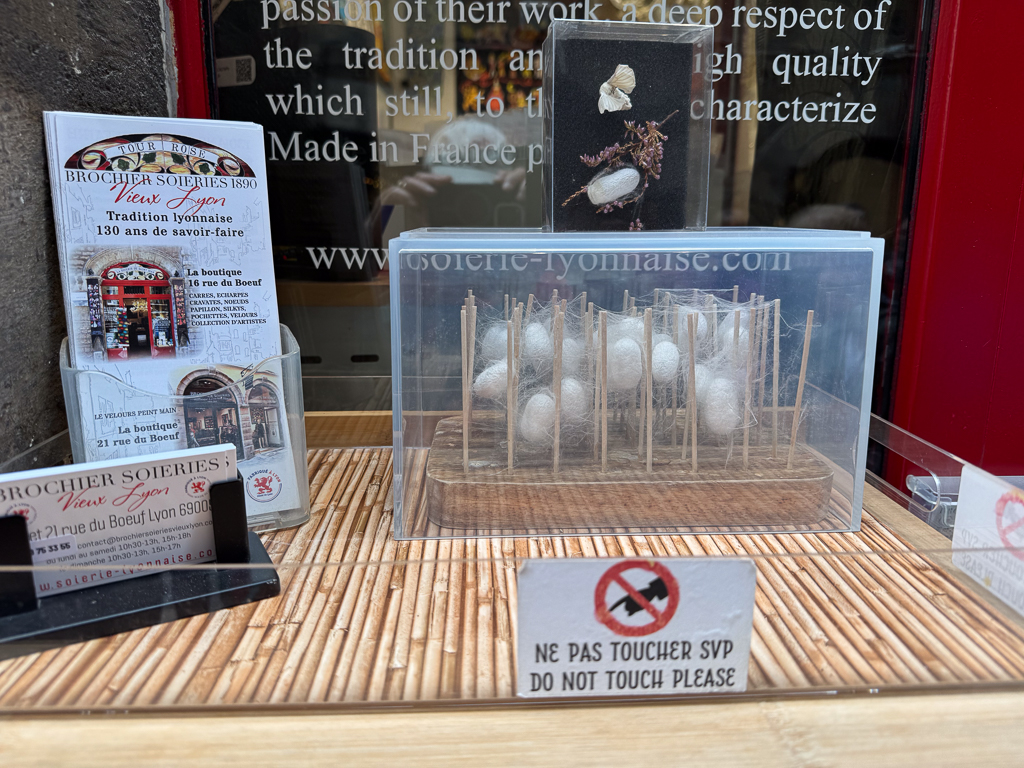
We continued onward to one of the historic silk weavers in Vieux Lyon, Soierie Saint-Georges, where Virgil, one of the owners, gave us a quick tour and wove a few millimeters of brocade silk on his 200-year-old loom. It’s a family business; his father has been a weaver for 45 years, and has spent much of the time creating upholstery for places like Versailles. They also have a more contemporary side, with scarves and ties available at reasonable prices.

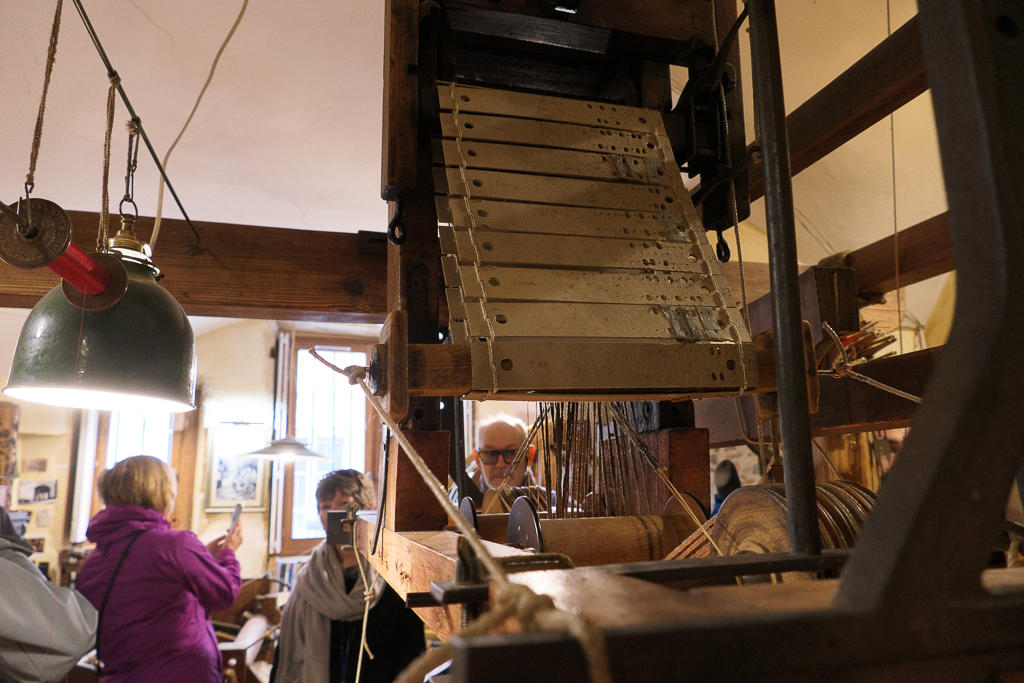

Brochier Soieries came onboard this afternoon to explain silk-screening and digital silk-printing…and just in case anyone was interested, they’d brought scarves for purchase. Diane was interested.
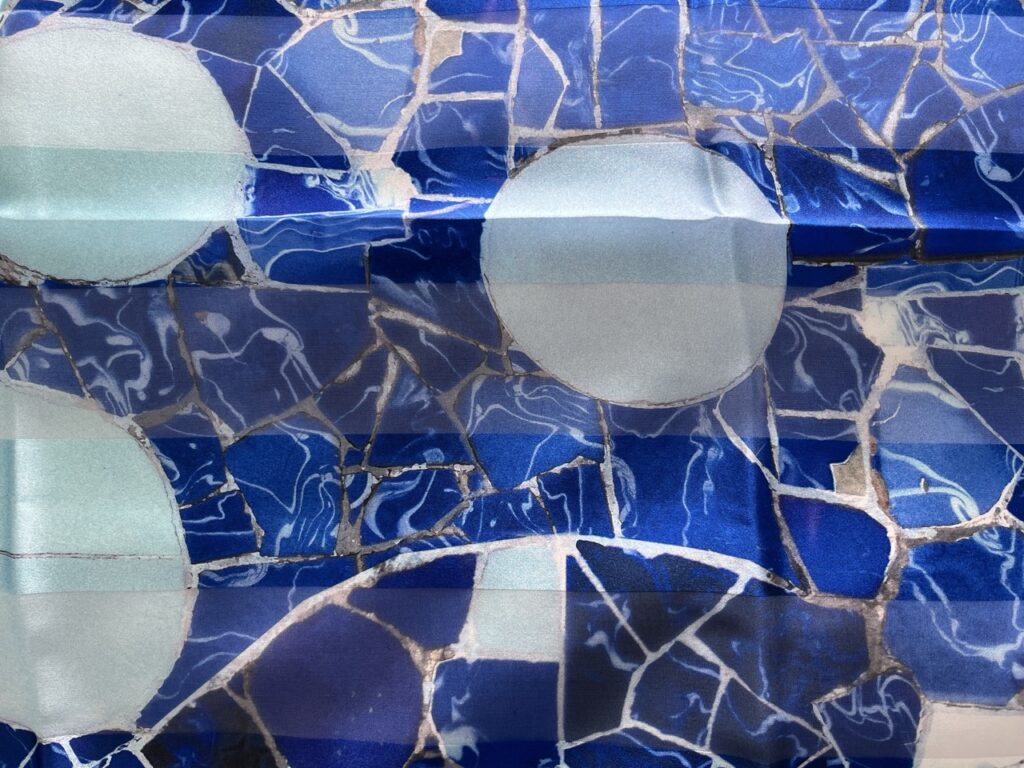
We’ll be leaving Lyon in a few minutes, en route to our first port of call, Macon.
